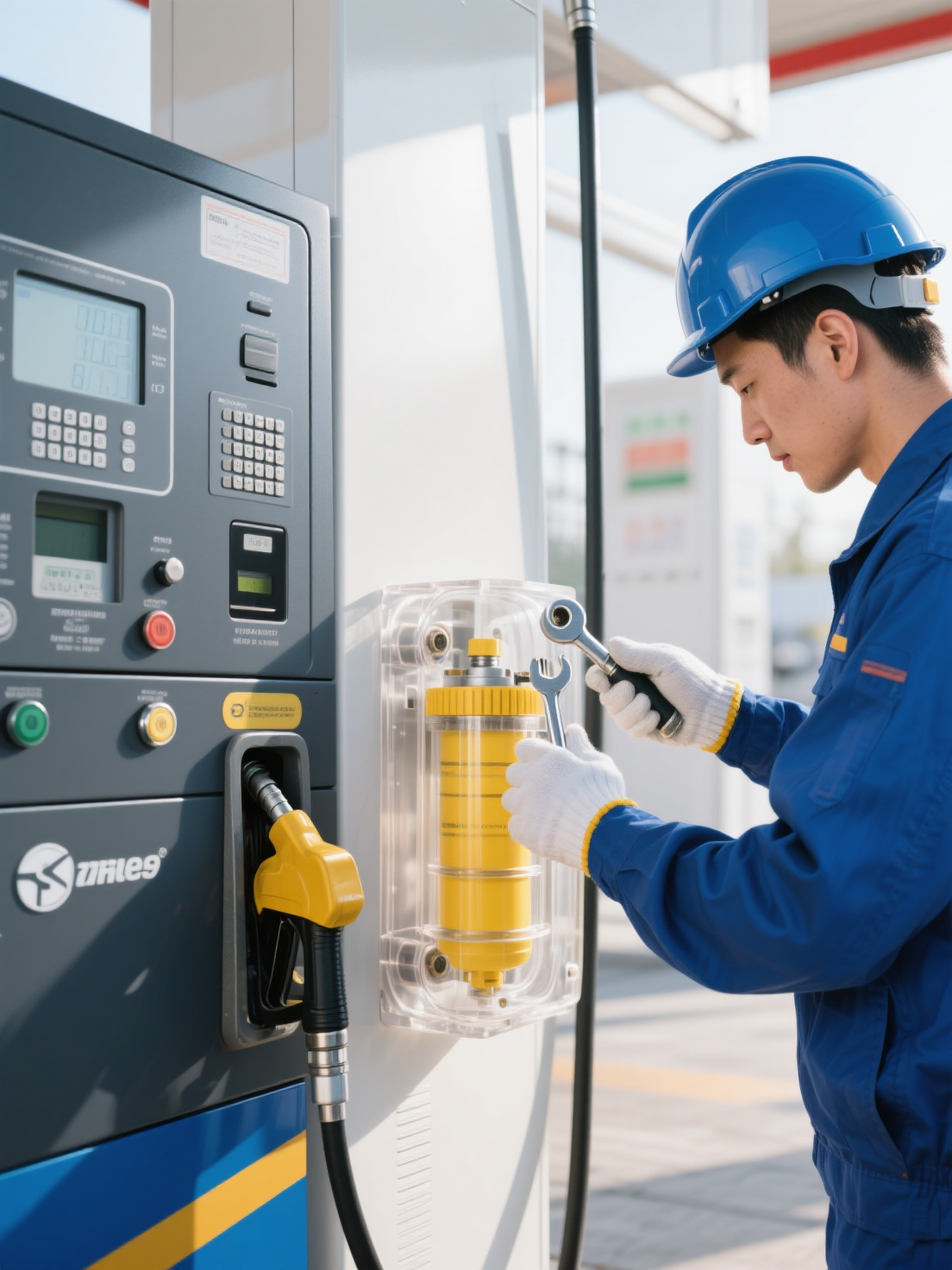How to change filter
Replacing the filter of the fuel dispenser is an important task to ensure the quality of the fuel and maintain the normal operation of the refueling equipment. It is necessary to strictly follow the standardized procedures and take good safety precautions. The following are the detailed work guidelines and safety precautions:
一. Preparations before Replacement
Tools and spare parts: Prepare tools and accessories such as wrenches, screwdrivers, sealants, and new filters, and ensure that the models of the spare parts match those of the fuel dispenser.
Safety equipment: Wear anti-static work clothes, gloves, goggles and other protective gear. Prepare fire extinguishers and explosion-proof tools. Set up warning lines and "No Smoking or Fire" signs in the work area.
Shut down and cut off power: Turn off the power supply of the fuel dispenser and stop the relevant oil pipeline valves to prevent oil leakage or incorrect equipment startup during the replacement process.
二. Replacement Process
Pressure relief and emptying: Open the pressure relief valve at the bottom of the fuel dispenser to release the residual pressure in the pipeline. Use a container to catch the residual oil to prevent it from splashing out.
Disassemble the old filter: Use a wrench to unscrew the connecting bolts at the inlet and outlet of the filter, carefully remove the old filter, and pay attention to keeping the sealing gasket. Observe whether the gasket is damaged. If it is damaged, it needs to be replaced together.
Clean the interface: Use a clean cloth to wipe the filter installation interface, remove impurities and oil stains, and ensure that the interface surface is clean and flat to prevent oil leakage caused by poor sealing.
Install a new filter: Apply an appropriate amount of sealant to the sealing surface of the new filter, install a new sealing gasket, align the filter with the interface and slowly screw it in. Use a wrench to evenly tighten the bolts to avoid seal failure due to uneven force.
Inspection and testing: After installation is completed, check whether all connection parts are firm. Open the pipeline valve, start the fuel dispenser slowly, observe whether there is any leakage at the connection of the filter, and test whether the fuel dispenser is operating normally.
三. Safety Precautions
Fire and explosion prevention: Smoking, open flame use, and the use of explosion-proof tools are strictly prohibited in the work area to prevent static electricity or sparks from causing fire and explosion accidents.
Prevent poisoning: The oil vapor from oil products is harmful. Ensure good ventilation during operation. If you accidentally inhale a large amount of oil vapor and feel unwell, immediately move to a well-ventilated area to rest. Seek medical attention if necessary.
Standardized operation: Strictly follow the operation procedures to avoid oil leakage or equipment damage caused by illegal operation. The old filters and waste oil that have been replaced should be properly collected and stored, and handed over to professional units for treatment to prevent environmental pollution.
Emergency response: In case of oil leakage, immediately cover and adsorb with sand and soil, and clean up the leaked oil. In case of fire, quickly use a fire extinguisher to put out the fire and call the police.
By standardizing the replacement process and implementing safety measures, the replacement work of fuel dispenser filters can be ensured to be completed safely and efficiently, guaranteeing the safe and stable operation of gas stations.
